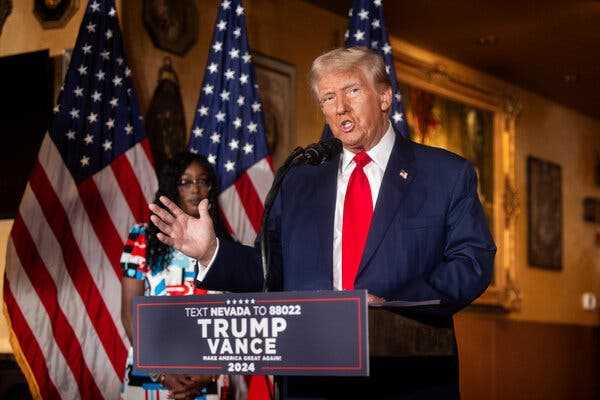Both Democrats and Republicans are expressing support for tariffs to protect American industry, reversing decades of trade thinking in Washington.
Listen to this article · 8:42 min Learn more
- Share full article
- 27

Former President Donald J. Trump’s proposals include a 10 to 20 percent tariff on most imports, as well as a more than 60 percent tariff on Chinese products.
When Donald J. Trump ran for president in 2016, there was not much love for tariffs in Washington. Many Republicans and Democrats believed that putting levies on imports created economic inefficiencies and that freer trade was the best recipe for growth.
That view has largely fallen out of fashion in 2024. While Mr. Trump and Vice President Kamala Harris, the Democratic nominee, differ greatly in their campaign proposals, both of their parties are increasingly embracing tariffs as an essential tool in protecting American manufacturers from Chinese and other global competitors.
It has been a sharp reversal from previous decades, in which most politicians fought to lower tariffs, rather than raise them. But the loss of American manufacturing jobs as a result of globalization and China’s focus on churning out cheap exports have created a bipartisan backlash against more open trade. Given that Mr. Trump’s 2016 win capitalized on such sentiments, Democrats have been striving to avoid losing voters opposed to free trade.
“On economic policy and trade issues, you have both major parties moving in the same direction,” said Nick Iacovella, a senior vice president at the Coalition for a Prosperous America, which advocates in favor of tariffs and domestic investments in industry.
Mr. Iacovella said that Mr. Trump would most likely go further on tariffs than Ms. Harris would, but no matter who wins the election “it’s still going to be a tariffs administration, and an industrial policy one.”
Ms. Harris has sought to differentiate herself from Mr. Trump’s trade proposals, which include tariffs of 10 percent to 20 percent on most imports, as well as levies of more than 60 percent on China. Many economists say that level of tariffs would drive up prices for consumers, since companies would likely pass on higher import costs.
We are having trouble retrieving the article content.
Please enable JavaScript in your browser settings.
Thank you for your patience while we verify access. If you are in Reader mode please exit and log into your Times account, or subscribe for all of The Times.
Thank you for your patience while we verify access.
Already a subscriber? Log in.
Want all of The Times? Subscribe.
SKIP ADVERTISEMENT
Source: nytimes.com



